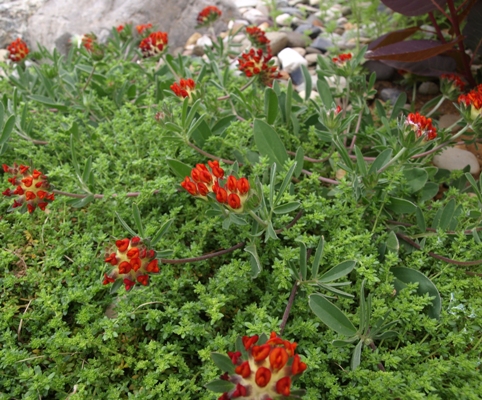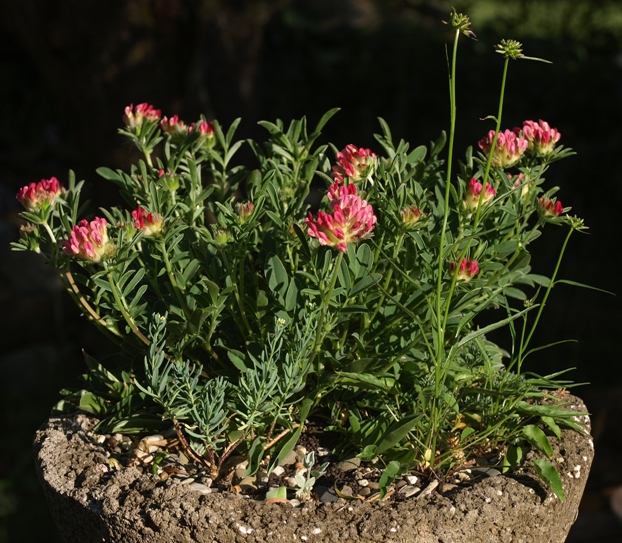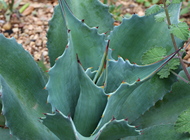 |
Anthyllis vulneraria var. coccinea |
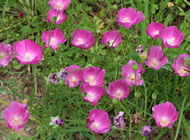 |
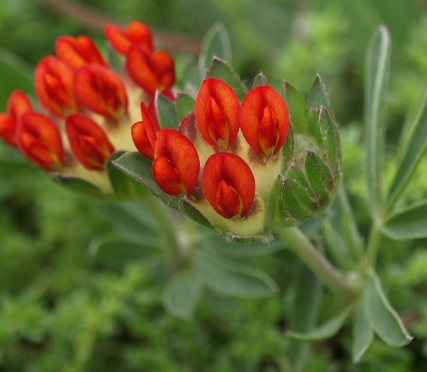
| | Observed close up, quite an unusual flower |
| Common name |
kidney vetch; woundwort |
| Family |
fabaceae |
| Life cycle |
perennial (Z6-10) |
| Flowers |
orange-red (spring) |
| Size |
6-16" |
| Light |
sun |
| Cultural notes |
well-drained soil, drought-tolerant |
From seed  |
Dehusk and scarify seed, then germinate at room temperature
detailed seed-starting info below
|
| Seed ripens | late June |
Described as a short-lived perennial, which would explain why we can't keep it in our garden for very long. Our current plants represent the second attempt at establishing this plant, which is well worth growing for its eyepopping scarlet flowers over fine-cut bluish-green leaves. It should feel fairly well at home on the dry slope of our waterfall hill. Green carpet rupturewort has grown all around it, making for a nice background without apparently bothering the woundwort.
|
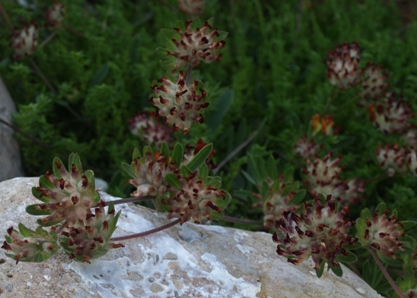
| | Developing seedheads in early June |
|
Recent attempts to re-establish this species after my original plants expired were unsuccessful: I'd get seedlings, but they'd disappear sometime during the following year, leaving me with no flowering plants the next spring. So last year, I stuck one of my seedlings in a hypertufa trough. It did nicely, and stayed evergreen during the winter, which it spent in the garage with the rest of the troughs. The plant was too large for its space though: it was prone to wilting even in winter, and has continued to be thirsty now that the troughs are back outside. So I'll need to find a better place for this plant (which blooms in a rose, rather than scarlet color). But not until I finish enjoying its blooms this spring.
|
This plant used to grow in our garden, but it slipped away... Seed for this plant is included on my seed trade list One or more images of this plant are included in my stock photo catalog About my plant portraits
PlantLinks to other web pages about Anthyllis vulneraria var. coccinea
- Seed from '06 trade (not labeled 'coccinea'). Removed two layers of husks (papery outside, leathery inside, to get to kidney-shaped seed. Scarified with sandpaper. Baggy 70F (57%G, 5-8d)
- Seed from '09 garden. After dehusking and sandpapering, found that only a small fraction of the seed particles actually contained plump bean-shaped seeds. Baggy 70F (67%G, 5d)
- Seed from NARGS '11/'12 exchange. Dehusked and sandpapered. Baggy 70F (67%G, 5d) - resandpapered - 70F (33%G, 3d)
- Seed for ssp. iberica from NARGS '12/'13 exchange. Sandpapered, baggy 70F (86%G, 4-5d)
- Seed for "A. coccinea" from NARGS '12/'13 exchange. Sandpapered, baggy 70F (44%G, 4-10d). More would have germinated given another scarification treatment.
- Same seed as above. Dehusked and scarified with sandpaper, baggy 70F (57%G, 4-12d)
- Seed from '15 garden. Sandpapered, baggy 70F (48%G, 3-10d)
I welcome comments about my web pages; feel free to use the form below to
leave feedback about this particular page. For the benefit of other visitors
to these pages, I will list any relevant comments you leave, and if
appropriate, I will update my page to correct mis-information. Faced with an
ever-increasing onslaught of spam, I'm forced to discard any comments including
html markups. Please submit your comment as plain text. If you have a
comment about the website as a whole, please leave it in my
guestbook. If you
have a question that needs a personal response, please
e-mail me.
Last modified:
February 16, 2018
Contact me
|


